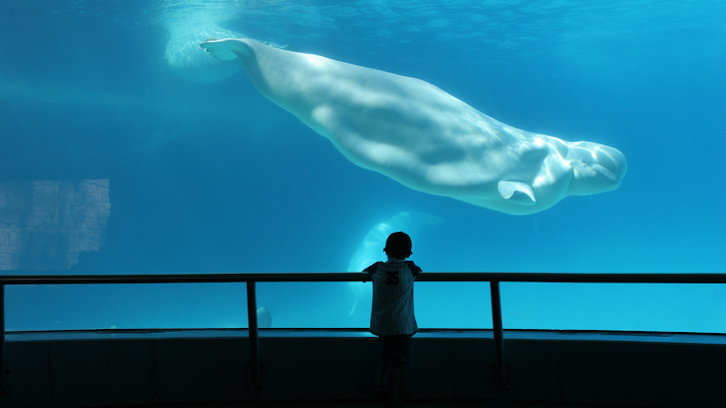Validation of a non-invasive method to measure stress in dolphins and beluga whales

A study by the Center for Animal Welfare Education at UAB validates a new non-invasive method for measuring cortisol in the epidermis of bottlenose dolphins and beluga whales, offering a less stressful alternative to traditional techniques. This breakthrough promises to improve animal welfare in zoos or aquariums and transform conservation studies.
In a world that becomes more aware each day of the need to protect and enhance the welfare of animals, especially those under professional human care or affected by anthropogenic activities, it is crucial to research new methodologies that help us understand and improve this welfare. Cortisol, a key hormone in the stress response in cetaceans such as common bottlenose dolphins and belugas, is traditionally measured in samples like blood or saliva.
Our study focuses on validating a new non-invasive method to measure cortisol concentrations in the epidermis of common bottlenose dolphins and belugas, providing an alternative to other more invasive traditional techniques. The objectives included developing a method for non-invasively collecting epidermal desquamation in captive common bottlenose dolphins and belugas, validating a protocol for extracting and analyzing cortisol concentrations using a commercial enzyme immunoassay (EIA) test and identifying potential confounding factors that could affect cortisol concentrations, such as sex, sample mass, and body location.
The methodology we propose, which involves gently scraping the epidermis to obtain samples safely and effectively, avoids procedures that could cause additional stress to the animals. This technique has proven not only viable but also repeatable, providing consistent results across different individuals and contexts. This is particularly valuable for its application in longitudinal studies on animal welfare both in controlled environments and in the wild. The results of this study have provided useful information about individual variability in epidermal cortisol concentrations, highlighting that there are no significant differences based on the sample location on the body. We think this simplifies the sampling protocol and reinforces the method’s utility in field studies, where conditions may be less controllable.
Figures: 1. Body locations from which skin samples were obtained from ten bottlenose dolphin’ individuals (Tursiops truncatus) (left) 2. Relationship of sample mass (mean cortisol concentrations ± SEM) and skin cortisol concentration (right).
In short, our study introduces a non-invasive method to collect, process, and quantify cortisol concentrations in the cetacean epidermis in a standardized, simplified, and economical manner, marking the first evidence of cortisol measurements through a commercial EIA in the epidermis of any cetacean species. The use of this technique can substantially improve management and welfare practices in zoological institutions and aquariums and has the potential to transform conservation studies by allowing less intrusive monitoring of animals' physiological states.
Clara Agustí1, Xavier Manteca1, Daniel García-Párraga2, Oriol Tallo-Parra1
1 Animal Welfare Education Centre (AWEC), School of Veterinary Science, Universitat Autònoma de Barcelona, 08193 Bellaterra, Spain
2 Oceanogràfic Foundation of the Valencian Community, Research Department, City of Arts and Sciences, 46013 Valencia, Spain
References
Agustí C, Manteca X, García-Párraga D, Tallo-Parra O. Validating a Non-Invasive Method for Assessing Cortisol Concentrations in Scraped Epidermal Skin from Common Bottlenose Dolphins and Belugas. Animals. 2024; 14(9):1377. https://doi.org/10.3390/ani14091377

